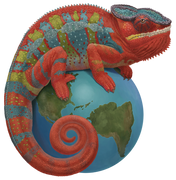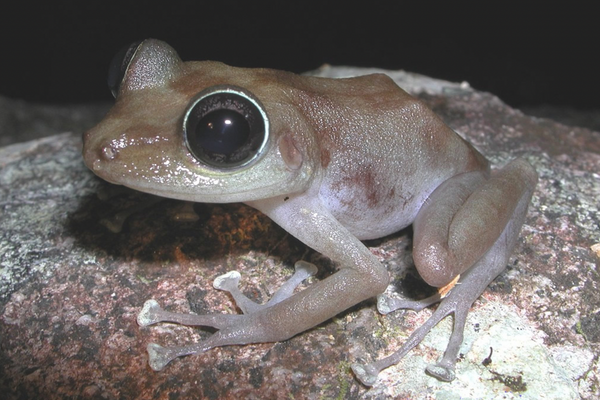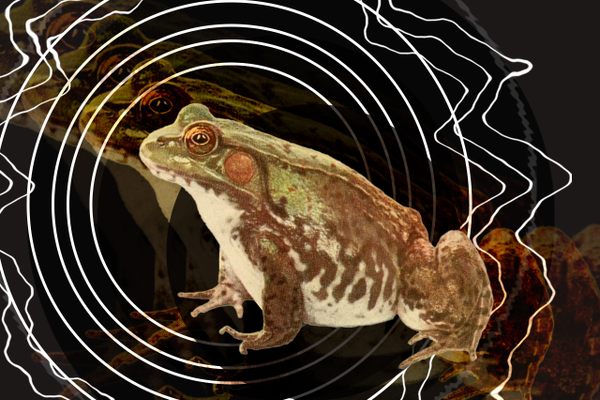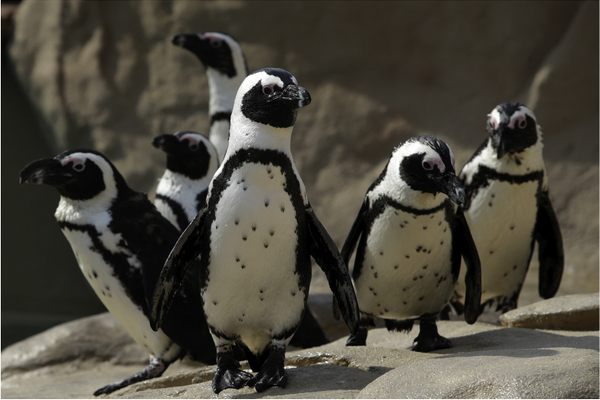The Small but Wonderful World of Bird Memorials
A statue in Maine made for a vagrant hawk offers one way to honor these fleeting visitors. Flaco fans take note.

In early March 2024, mourners gathered in New York’s Central Park to pay tribute to Flaco, an Eurasian eagle owl. The Central Park Zoo escapee—who, during his year free in the park, captured many of the city’s hearts, minds, and rats in his talons—was killed on February 23, 2024, likely by a high-rise window.* Hundreds came to his memorial service, and many laid flowers, letters, drawings, and photographs under the oak that was his preferred tree. Some are now seeking something more permanent. A petition calling on the City Council to install a statue of Flaco in the park has more than 4,000 signatures from people who, in the words of organizers Brandon Borror-Chappell and Mike Hubbard, wish “to commemorate his legacy—and to remind us all to keep a curious, respectful eye out for the myriad wonderful beings with whom we share this space.”
If this happens, that statue will join a distinctive lineage: the bird memorial. While the world is aflutter with bird art in general, the flock of memorials for individual, known birds is small. Some of these honor domestic companions such as Alec, a goose who liked to walk children to school in 1920s Belfast, and Roscoe, a feral rooster who frequently crossed the road in Takoma Park, Maryland. Others are beautiful memorials for an entire extinct species, placed near where their endlings—the last members of a species, invested with symbolic weight before and after death—were last seen.

But, as far as I’ve been able to find,** there is only one statue out there that specifically commemorates a free-living bird who ended up far from where he supposedly belonged. The sculpture, by bronze artist David Smus, portrays a juvenile great black hawk who lived for a short season in Portland, Maine. It’s a unique and poignant tribute to a bird who, like Flaco, gave his life to be part of a new community.
A Brief Visit
The great black hawk memorial is at the west end of Portland’s Deering Oaks Park. It’s a 10-foot granite pillar holding up a shining bronze depiction of its subject: life-sized (great black hawks have a wingspan of about four feet), head swiveled, and one wing stretched as if ready to dive. Near the bottom of the pillar is a wary-looking gray squirrel, also in bronze. The sculpture was made to honor the first great black hawk ever seen in the United States. These birds of prey are common in South America and coastal Mexico, where they call to each other with a special whistle-screech and use their long legs to chase down prey on the ground. They generally don’t travel much.
But in April 2018, a juvenile male was spotted in Texas, farther north than ever seen before. Birders got excited. In August of that year, the same great black hawk, identified by his plumage patterns, showed up way farther north, on the coast of Maine. He flew off again, but returned in late October, and eventually settled down in Deering Oaks Park.
Excitement grew. Many birds travel thousands of miles per year as part of their regularly scheduled programming, and make expected visits. East Coast Americans count on warblers coming through in the spring and fall, for instance. But on occasion, individuals from migratory and homebody species can go off course, pushed by wind or confusion or curiosity, and end up somewhere brand new. These birds, known as vagrants, often make a big impression among birders and in the wider communities that come to adopt them as their own. (At least two other vagrants have been memorialized in some way, if not with a full statue: a white-crowned sparrow who visited Norfolk, England, in 2002 was incorporated into a stained-glass window in a church there; and there is a stone in Blidworth, England, commemorating an Egyptian nightjar who was shot by a hunter.)

Birders, of course, love when an unusual species seems to have gone out of its way to visit—the reverse of the usual situation. But almost everyone tends to appreciate them. Like Flaco and other wanderers or escapees, vagrants seem out of place—a designation complicated by our time of captive breeding, zoos, human-mediated dispersal, and climate-change-driven range shifts, but one that still holds symbolic power and poses interesting problems. Their stories land as heartwarming or goofy; inspiring or tragic.
Maine’s great black hawk was all of these and more. His presence was thrilling: Here (again, like Flaco) was a massive bird of prey with a flair for drama, lording over a city park. People came from around the country to see him; some who lived nearby came almost every day.
Watching him was intriguing and rewarding: What was this streaky juvenile, whose species generally lives off lizards and crayfish, going to eat in the winter? (He solved that puzzle quickly, and was rarely photographed without a bloodied squirrel.) “The fact that this incredible bird has survived so long so far away from its native range is simply astounding,” wrote naturalist Doug Hitchcox in Maine Audubon. “How many Great Black Hawks have ever seen snow?”
In the end, the story was sad, too—the bird’s chosen home could not take care of him. In late January, parkgoers found the great black hawk on the ground, his long legs frostbitten. A local rehab group, Avian Haven, made the difficult decision to euthanize him, and he died on January 31, 2019.
A Permanent Memory
David Smus, who lives about two hours from Portland, never got to see the great black hawk alive. But he has been sculpting herons, puffins, and other Maine birds for years, including some living at Avian Haven. After the great black hawk’s death, he got a call from a volunteer there.

People really missed their visitor. Several organizations, including Maine Audubon, Maine Fish and Wildlife, and the Friends of Deering Oaks, were thinking of working together to make a memorial for him—“a really nice depiction of what the bird really looked like, live in that park,” Smus recalls. They asked if he would put together a proposal.
Smus took measurements and photographs of the hawk’s body, which was later taxidermied for the Maine State Museum. He noted the attributes of the unfamiliar species—the lanky legs, the featherless lores (the space between the eye and the beak)—and of the individual, whose unique streaked pattern and bent tail feather had allowed him to be recognized easily on both sides of the continent.
Commissions, especially of public art, involve integrating different needs, Smus says. Asked to make the statue vandal-proof, he decided to place it on top of a granite column, where people could “see it from a great distance, and be drawn to it between the trees,” he says. To ensure visibility from the ground, he stretched one of the hawk’s broad wings, “like it’s maneuvering through those trees.” He designed the tail with a wonky feather. And to show how the hawk had survived (and to interest children, who might not be able to see up to the top) he included a bronze squirrel.
Smus’s proposal was accepted. The finished sculpture, Extraordinary Journey, was unveiled in 2020, in a grove of spruce and catalpa trees, “a favorite spot for the bird to roost” and a good place for a picnic, Smus says. Nearby is an informational plaque that details the whole story in words.

Smus is also an admirer of Flaco, and hopes that a permanent memorial could take shape. In the meantime, more tributes to the owl are coming in, both abstract (a recent ice skating show was dedicated to him) and concrete (a group of state senators and assembly members proposing a bill that requires new buildings to incorporate bird-friendly designs have renamed it “The FLACO Act”). It’s a bit funny to think of bird statues, which pay homage to a free-moving being by fixing it into place. But we’re stuck on Earth, and this is one way we can keep them with us.
* Update: According to Flaco’s official postmortem report, released on March 25, 2024, Flaco also suffered from “severe pigeon herpesvirus from eating feral pigeons that had become part of his diet, and exposure to four different anticoagulant rodenticides,” both of which likely contributed to his death.
** If you know of other examples of bird memorial statues, please feel free to write me at caragiaimo@gmail.com.
Cara Giaimo writes about plant and animal science and culture across the Internet, and lives with her wife and two cats in Somerville, Massachusetts. Cara is also co-author of Atlas Obscura’s upcoming book, Wild Life: An Explorer’s Guide to the World’s Living Wonders. Pre-order your copy today!























Follow us on Twitter to get the latest on the world's hidden wonders.
Like us on Facebook to get the latest on the world's hidden wonders.
Follow us on Twitter Like us on Facebook